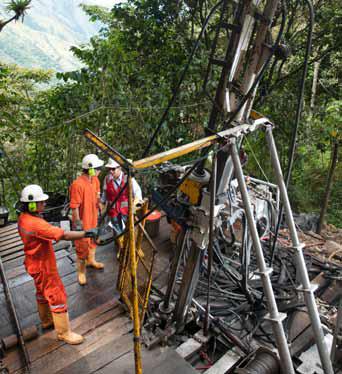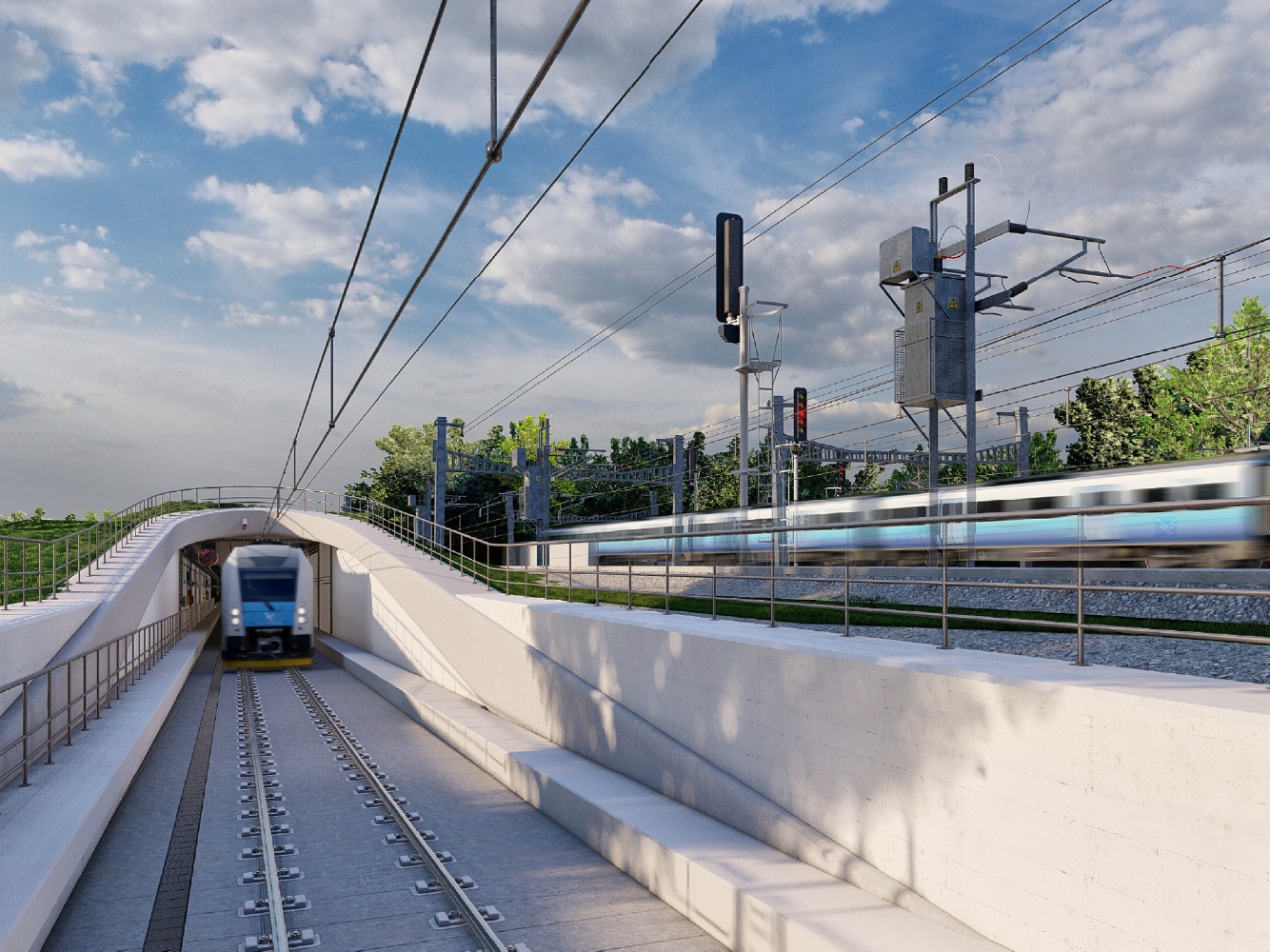
As global financial markets stagger, the metal that used to underpin them all is becoming very attractive. Toronto based and listed Continental Gold is focused on Colombia and is just two years away from large scale production.
The headlines today proclaim a fall in gold prices, but the fluctuation is all in the region of $1,700 to $1,800 an ounce ÔÇæ this year prices have already hit $1,900 and are forecast by Nomura to rise to over $2,000 by the end of 2012. With prices like this, even low grade and high cost mines are being brought out of mothballs, but high grade and low cost resources are the thing the investors are looking for, and that is just what Continental Gold is offering from its operations in Colombia.
Colombia has a lot of resources and a long tradition of mining. It is the fourth largest producer of hydrocarbons in Latin America and its Cerrejón mine is the largest open pit coal mine in the world. Historically, it is the largest producer of gold in Latin America, and following its invasion in 1499 by Spain it furnished the raw material for the coinage thatcirculated throughout the western world.
But there was a long window during which nothing much happened in Colombia. Ask most people what Colombia means to them and they will tell you drug cartels, kidnappings and general lawlessness. That may have been the case ten years ago, but since the turn of the century security has become a lot better, says Continental Gold’s CEO Ari Sussman. “The world is waking up to Colombia; since the government started ramping up operations against the militias in general, and FARC in particular, their influence has weakened dramatically.” Medellín, he says, which used to be a very dangerous place, is as accessible and safe for tourists and visitors as any city in the world.
That is important. Medellín is the capital of the Antioquia province where Continental’s multi-million ounce deposit (the Buriticá project) is located. The area surrounding Buriticá is run by the people of Columbia, not that of the notorious Pablo Escobar. Colombia is the best new frontier in the world, says Sussman. “If security can be maintained and advances against Colombia’s problems keep improving as much as over the last decade, minerals will make it wealthy.”
Large American and South African mining corporations are becoming attuned to the improved conditions in Colombia but Continental Gold is better positioned to operate there than any of them. Its chairman, Robert Allen, has 30 years’ experience in identifying, exploring and financing mineral projects there, through his company Grupo de Bullet, which is also headquartered in Medellín.
It was Bob Allen who started a small operation at Buriticá back in the early 1990s. This mine, now run by Continental Gold, produces around 4,000 ounces of gold a year so it is tiny by international standards and compared to the planned operation. Continental Gold’s latest 43-101 resource estimate included a total of 630,000 ounces of gold in the ‘measured’ and ‘indicated’ categories and 2,500,000 ounces of gold in the ‘inferred’ category. Nevertheless, the current operation has an importance well beyond its size, being used for metallurgical testing and as a training ground by Continental Gold for its employees as it ramps up for production by 2014.
The pilot plant extracts gold from multiple veins on the deposit: the current 43ÔÇæ101 resource estimate for Buriticá included 38 veins. Its presence paves the way for gaining the trust of the local people. Getting the support of the local population makes life a lot easier, wherever you are working, says Sussman, and the fact that Continental already employs a third of the entire population of the Buriticá town does a lot for its popularity. “We do not have to start from scratch with community relations; we have only to maintain and strengthen them.”
Apart from Bob Allen, the company has a unique asset in its president and chief operating officer, Mark Moseley-Williams. A Colombian national with a family tradition of mining, Moseley-Williams was educated in the USA and the UK and is a renowned mining engineer, having built mines for international companies including Agnico-Eagle, where he was part of the team that built its flagship Pinos Altos mine in Mexico.
Having a Colombian to build the mine is a huge advantage. And Sussman himself has drawn together the rest of the world class team that makes up Continental Gold. He is founder and executive chairman of Colossus Minerals, a Brazilian mining company, and is particularly glad to have secured the services of Dr. Vic Wall as a special adviser. “We work exclusively together; he is regarded as one of the best targeting geologists in the business, not just where discoveries are concerned but also reinterpretation of geological systems around the world.”
Until Vic Wall came on the scene, Buriticá was a misclassified ore body. Earlier surveys had failed to identify it as a high grade carbon base metal (CBM) gold vein deposit, largely because it is a style of deposit not common in Latin America. Wall, who has published extensively on the subject, picked up and demonstrated its similarity to Barrick Gold’s 25 million ounce Porgera deposit in Papua New Guinea.
The deposit is comparatively accessible – it is below-ground mining, but the deposit lies beneath a hillside so the ore can be accessed at a number of levels and easily moved to a conventional processing plant, using a similar process to the existing small scale plant located in the valley. “The important thing is that it is a high grade deposit which means we have to pull out less rock for more gold! We are confident that we will be producing within the lowest quartile in the world in terms of cost.” Buriticá will be producing between 200,000 and 300,000 ounces of gold a year by the end of 2014, Sussman promises.
Continental’s interests, all 100 percent owned, range from the high grade Buriticá and Berlin (again north of Medellín and formerly mined between 1930 and 1946) properties to the grass roots properties in the south. These are all the result of Bob Allen’s work over decades, secured in Colombia’s unfashionable days but looking increasingly attractive today. “If we hadn’t taken a chance on Buriticá we wouldn’t be where we are today,” says Sussman. “We aim to keep doing that – it is rare to make a discovery of this quality but this is how mining works.”
Dominical, in the deep south of the country, is a speculative shot that may well come to fruition. In contrast to Buriticá and Berlin, there is no mining history there but surface testing has shown it to be a promising high grade gold and silver project. “We will bring some diamond drills to Dominical during 2012 and we will see what happens - you are not talking about a huge amount of money to drill 5,000 metres.” The cost of diamond drilling is around $250 per metre, he says.
Some projects may need the help of a larger operator, in which case Continental Gold enters farm-in agreements whereby a major mining company buys an interest and develops the site. One such project is Dojura, a site that shows signs of having been mined in the distant past but can only be reached by mule or boat. It was too dangerous to work there until recently but Continental Gold’s joint venture partner AngloGold Ashanti is ready to start helicopter surveys there. Another possible farm-in prospect is the 5,979 hectare Santander concession 35 kilometres north east of the major city of Bucaramanga.
It’s hard to escape the sheer romance of gold exploration in a country like Colombia, with all its unexplored potential. The Colombian government is now getting a grip on security and is very keen to encourage investors who are able to develop its resources. Ari Sussman believes Continental Gold, which has deeper roots there than any other operator, has an opportunity to become a leading player in this favorable environment.
DOWNLOAD
 NA-Nov11-Continental.Gold-BRO-s.pdf
NA-Nov11-Continental.Gold-BRO-s.pdf













